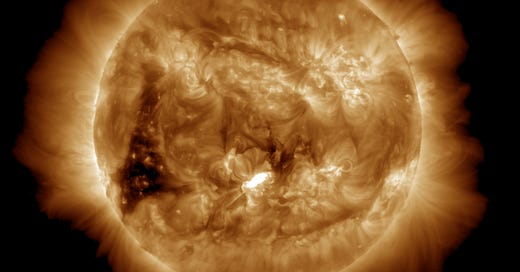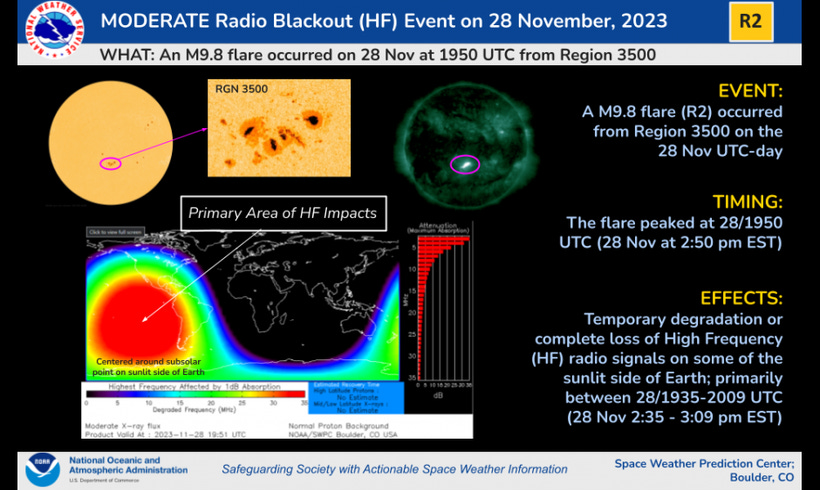Moderate HF Radio Blackout Event On November 28th, Multiple Coronal Mass Ejections From Sun On November 27th, Three Earth-Directed Components
"Multiple coronal mass ejections (CMEs) occurred from the Sun on 27 November 2023. Three of these CMEs appear to have Earth-directed components".
US Space Weather Prediction Center: US Space Weather Prediction Center: R2 (Moderate) HF Radio Blackout Event on 28 November 2023:
An R2 (Moderate) HF Radio Blackout Event occurred on 28 November, 2023 at 1950 UTC. The responsible flare peaked at M9.8 at 2:50 pm EST on 28 November as measured by the GOES-18 satellite.
The flare source was NOAA/SWPC Region 3500 - a moderately complex sunspot group near the Sun’s central meridian. HF degradation was possible over much of the eastern portion of the southern Pacific Ocean while the flare was in progress and above M5 levels.
The flare was also associated with a probable coronal mass ejection (CME) as indicated by USAF solar and radio telescope observatory reports and also as suggested in GOES SUVI imagery.
SWPC forecasters will examine coronagraph imagery as observations become available for CME signatures and analyze accordingly.
Due to this recent activity and instability of Region 3500, the chances for further M-class flares have increased and there is now a slight chance for X-class flares.
G1 and G2 Watches for 30 Nov - 1 Dec 2023: "Multiple coronal mass ejections (CMEs) occurred from the Sun on 27 November 2023. Three of these CMEs appear to have Earth-directed components with the first arrival as a potential glancing blow or near-Earth proximity passage beginning as early as late on 29 Nov EST (early 30 Nov UTC).
The later CMEs are anticipated to arrive at Earth near the end of 30 Nov EST (early 1 Dec UTC) as at least glancing blows. Analysis and model results suggest G1 levels are probable on the 30 Nov UTC-day in response to any initial CME influences, followed by G2 levels on the 1 Dec UTC-day as the additional CMEs arrive".










